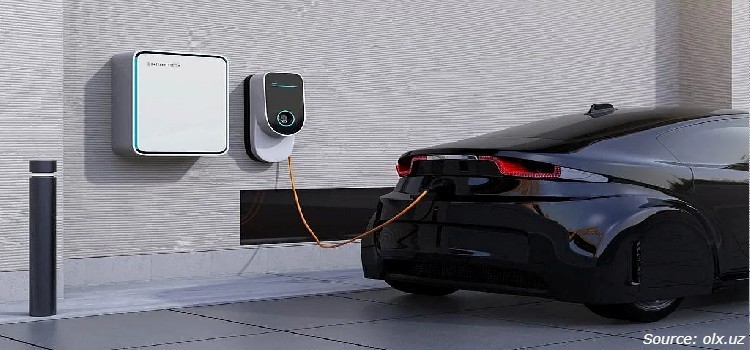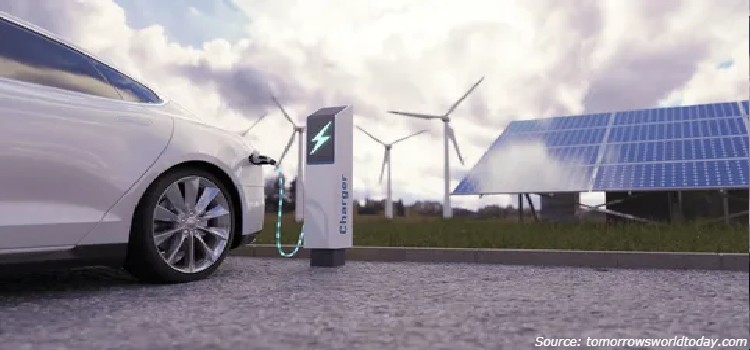
Distributed I/O Market by Type (Analog and Digital), by Communication Protocol (Profibus, Profinet, EtherNet/IP, Modbus TCP, DeviceNet, and Others), by Mounting Options (Rack-Mounted I/O, DIN-Rail Mounted I/O, Panel-Mounted I/O, and Field-Mounted I/O), by I/O Channel Density (Low-Density Modules, Medium-Density Modules, and others), by Application (Process Control, and Others), by Industry Vertical (Aerospace & Defense, and Others) – Global Opportunity Analysis and Industry Forecast, 2023–2030
Industry: Automotive & Transportation | Publish Date: 13-Feb-2025 | No of Pages: 601 | No. of Tables: 424 | No. of Figures: 369 | Format: PDF | Report Code : AT853
US Tariff Impact on Distributed I/O Market
Trump Tariffs Are Reshaping Global Business
Market Overview
The global Distributed I/O Market size was valued at USD 3.07 billion in 2022, and is predicted to reach USD 5.73 billion by 2030, with a CAGR of 7.3% from 2023 to 2030. Distributed I/O, also known as distributed input/output, refers to distributing input and output devices across a system or network instead of centralizing them in one place. This approach is commonly used in industries, such as automation and computing, to reap benefits, including enhanced efficiency, scalability, flexibility, and quicker response times. It involves strategically placing devices such as sensors and actuators throughout a system to reduce wiring complexity, boost fault tolerance, and improve overall performance. Distributed I/O focuses on ensuring efficient and dependable data and control signal exchange between field devices and central control systems.
The distributed I/O industry includes a wide range of components and technologies that enhance connectivity and functionality in automated processes across different sectors. Prominent communication protocols in distributed I/O, including profibus, profinet, modbus, and DeviceNet, are integrated with advanced technologies, including Industrial Internet of Things (IIoT), wireless communication, safety I/O, and cloud connectivity for better functionality.
The Growing Demand for Industrial Automation Worldwide Fuels the Adoption of Distributed I/O
The increasing demand for industrial automation worldwide has become a significant driver behind the widespread demand for distributed I/O systems. According to a McKinsey & Company report published in January 2023, automated systems are anticipated to account for a quarter of the capital expenditures of industrial companies in the next five years. Various industries are actively pursuing increased efficiency, precision, and streamlined operations, making the integration of distributed I/O systems increasingly essential.
These systems enable seamless communication among various components within automated control processes, and are pivotal in optimizing industrial workflows. From manufacturing facilities to energy plants, the adoption of distributed I/O guarantees precise data exchange, real-time monitoring, and enhanced control capabilities. This market catalyst underscores the indispensable role of distributed I/O in the ever-evolving landscape of industrial automation, positioning it as a cornerstone for the future of efficient and advanced industrial processes.
The Growing Emphasis on Clean and Sustainable Energy Necessitates the Utilization of Distributed I/O
The increasing global emphasis on clean and sustainable energy sources drives the adoption of distributed I/O systems. This shift towards environment-friendly energy solutions is driven by growing awareness of environmental issues, climate change, and the need to reduce carbon emissions. As countries worldwide commit to ambitious renewable energy goals, the energy industry is undergoing significant change. Distributed I/O systems play a crucial role by enabling seamless communication and data exchange among various renewable energy assets and grid infrastructure. This capability supports efficient energy resource management.
According to the International Energy Agency (IEA), renewable energy is projected to account for 95% of the growth in global power capacity by 2026. Solar photovoltaics (PV) is expected to contribute more than half of this increase, with wind power making up to nearly 27%. Other renewable sources, such as hydropower, bioenergy, and geothermal energy, will represent the remaining 18%. As renewable energy installations increase, the demand for distributed I/O systems grows. This is due to their pivotal role in efficiently managing and integrating these diverse energy sources into the grid infrastructure.
High Installation Costs Along with Technological Complexities Restrain the Market Growth
The distributed I/O market growth is restrained by high installation costs and complex technology associated with the integration of distributed I/O. Setting up distributed I/O systems requires a significant initial investment, covering equipment, infrastructure, and skilled personnel. This can pose as a barrier for small businesses within budgetary constraints.
Additionally, the growth of the distributed I/O industry faces obstacles due to its technological complexities and the lack of expertise within the field. This sector involves managing a wide array of components such as sensors, actuators, and communication devices in industrial processes, which require configuring intricate networking technologies, integrating with existing systems, and ensuring real-time functionality. Furthermore, ensuring the fault tolerance, programming, safety compliance, and system updates demands specialized expertise. The high level of technical intricacy can present challenges for companies, requiring them to access specialized knowledge and skills through training or external experts, which may pose limitations for businesses.
The Introduction of The Industry 4.0 And the Internet of Things (IOT) Across the Globe Creates Opportunities for The Market
The introduction of the Industry 4.0 and the Internet of Things (IoT) represents a significant transformation within industrial operations. This integration revolutionizes the way data is shared and utilized in manufacturing processes. Distributed I/O systems are vital links between sensors, actuators, and central control units. These systems enable the seamless exchange of real-time data, facilitating more informed decision-making and the decentralization of intelligence.
Additionally, these distributed I/O systems exhibit adaptability, scalability, and efficiency characteristics, rendering them exceptionally well-suited for the intricate demands of the Industry 4.0 and IoT environments. Their implementation makes predictive analytics and maintenance attainable, improving operational efficiency and enabling cost reduction.
North America dominates the distributed I/O market
The trend of industrial automation and robotics in North America has emerged over the past few years. Countries such as the U.S., Canada, and Mexico are prominent frontrunners in the integration of IoT and artificial intelligence (AI) technologies, both pivotal elements of the Industry 4.0. The increasing adoption of these technologies across sectors such as automotive, pharmaceuticals, and others is creating a growing demand for industrial process automation solutions in this region. The U.S., in particular, is a significant contributor to this market, driven by its huge manufacturing and automotive sectors. In 2021, the U.S. stood as one of the largest manufacturing industries globally, with the manufacturing sector contributing to USD 2.3 trillion to the U.S. GDP and representing 12.0% of the total GDP. This, in turn, creates a significant demand for the adoption of these advanced systems into their operation to enhance efficiency.
Moreover, the presence of major industrial automation companies, such as Rockwell Automation and Emerson Electric, play a pivotal role in propelling the growth of the distributed I/O market in this region. For instance, in January 2022, Rockwell Automation launched the Allen-Bradley FLEX 5000 analog safety I/O modules. These modules provide device monitoring and functional safety protection for process applications in which speed or frequency measurement, temperature, pressure, or flow sensor monitoring are required for functional safety protection.
Asia-Pacific Is Expected to Show Steady Growth In The Distributed I/O Market
The Asia-Pacific region consists of China, Japan, India, South Korea, Australia, Indonesia, Singapore, Taiwan, Thailand, and the rest of Asia-Pacific. With increasing awareness of environmental sustainability and the need to reduce energy consumption, industries across the Asia-Pacific region are seeking energy-efficient solutions. Distributed I/O is crucial in optimizing processes, reducing energy wastage, and enabling predictive maintenance. This aligns with the region's focus on sustainable manufacturing and resource management.
Moreover, government initiatives and the growing prevalence of automation in sectors such as oil & gas, manufacturing, power generation, and chemicals have contributed to the widespread adoption of industrial automation across the region. For instance, the Chinese government implemented the "Made in China 2025" initiative, which focuses on advancing the modernization of the country's manufacturing sector by incorporating advanced automation technologies such as distributed I/O. The objective is to enhance the competitiveness and technological capabilities of Chinese industries, particularly in the context of distributed I/O systems.
Competitive Landscape
Several market players operating in the distributed I/O industry include Emerson Electric Co., Siemens AG, Rockwell Automation, Inc., Schneider Electric SE, Honeywell International Inc. General Electric Company, Omron Corporation, ABB Ltd., Advantech Co., Ltd., Ingeteam S.A., AkYtec GmbH, WAGO Kontakttechnik GmbH & Co. KG, Phoenix Contact GmbH & Co. KG, Beijer Electronics Group AB, Beckhoff Automation GmbH & Co. KG, and others. These market players are adopting product launch and partnership strategies across various regions to maintain their dominance in the global market.
For instance, in August 2023, ABB introduced a new I/O series designed to meet the digital requirements of oil & gas fields. It offers enhanced connectivity and digital capabilities, allowing for more efficient and data-driven operations in the oil & gas industry. By enabling seamless integration with digital systems and providing the flexibility needed to adapt to evolving industry demands, it improves the performance and reliability of oil & gas facilities.
Moreover, in May 2023, Rockwell Automation launched a new on-machine distributed I/O solution called the Allen-Bradley ArmorBlock 5000 I/O blocks. The I/O blocks are integrated with IO-Link technology, which provides an integrated and scalable solution designed for on-machine use in harsh environments. It offers general tag structure and flexibility, making them easier to implement. The on-machine utilization of the blocks results in faster installation, commissioning, and problem-solving, leading to mitigated downtime.
Furthermore, in December 2022, Honeywell partnered with Regreen Excel EPC India. Honeywell deployed its PlantCruise by Experion DCS solution integrated with distributed I/O, modular systems, and field instruments (FI) across its 40 plants in India. This technology helps maximize users’ production uptime, improves safety, reliability, and efficiency, and reduces investments and operating costs.
Distributed I/O Market Key Segments
By Type
-
Analog
-
Digital
By Communication Protocol
-
Profibus
-
Profinet
-
EtherNet/IP
-
Modbus TCP
-
DeviceNet
-
Others
By Mounting Options
-
Rack-Mounted I/O
-
DIN-Rail Mounted I/O
-
Panel-Mounted I/O
-
Field-Mounted I/O
By I/O Channel Density
-
Low-Density Modules
-
Medium-Density Modules
-
High-Density Modules
By Application
-
Process Control
-
Industrial Automation
-
Building Automation
-
Energy Management
-
Other Applications
By Industry Vertical
-
Aerospace & Defense
-
Oil & Gas
-
Energy & Utilities
-
Automotive
-
Food & Beverage
-
Pharmaceuticals
-
Other Industry Verticals
By Region
-
North America
-
The U.S.
-
Canada
-
Mexico
-
-
Europe
-
The U.K.
-
Germany
-
France
-
Italy
-
Spain
-
Denmark
-
Netherlands
-
Finland
-
Sweden
-
Norway
-
Russia
-
Rest of Europe
-
-
Asia-Pacific
-
China
-
Japan
-
India
-
South Korea
-
Australia
-
Indonesia
-
Singapore
-
Taiwan
-
Thailand
-
Rest of Asia-Pacific
-
-
Rest of World
-
Latin America
-
Middle East
-
Africa
-
Key Players
-
Emerson Electric Co.
-
Siemens AG
-
Rockwell Automation, Inc.
-
Schneider Electric SE
-
Honeywell International Inc.
-
General Electric Company
-
Omron Corporation
-
ABB Ltd.
-
Advantech Co., Ltd.
-
Ingeteam S.A.
-
AkYtec GmbH
-
WAGO Kontakttechnik GmbH & Co. KG
-
Phoenix Contact GmbH & Co. KG
-
Beijer Electronics Group AB
-
Beckhoff Automation GmbH & Co. KG
Report Scope and Segmentation
|
Parameters |
Details |
|
Market Size in 2022 |
USD 3.07 Billion |
|
Revenue Forecast in 2030 |
USD 5.73 Billion |
|
Growth Rate |
CAGR of 7.25% from 2023 to 2030 |
|
Analysis Period |
2022–2030 |
|
Base Year Considered |
2022 |
|
Forecast Period |
2023–2030 |
|
Market Size Estimation |
Billion (USD) |
|
Growth Factors |
Growing Demand for Industrial Automation Worldwide Rising emphasis on clean and sustainable energy across the globe |
|
Countries Covered |
28 |
|
Companies Profiled |
15 |
|
Market Share |
Available for 10 companies |
|
Customization Scope |
Free customization (equivalent up to 80 working hours of analysts) after purchase. Addition or alteration to country, regional, and segment scope. |
|
Pricing and Purchase Options |
Avail customized purchase options to meet your exact research needs. |

















 Speak to Our Analyst
Speak to Our Analyst





















